The OCR World Championships
Over 100 professional athletes from as many as 70 countries will be competing at Stratton from September 22-25, 2022
STORY BY CASSIE CASSIDY
PHOTOGRAPHY JACK GORAS COURTESY THE OCR
Imagine you’re crawling on your hands and knees in a river of mud through a dark tunnel with barbed wire above you. Three-foot-deep mud pits surround you. You emerge from the tunnel to face a towering 8-foot wall with a dangling rope. The only way to the other side is to cling to the rope, climb up, and hurl yourself over the other side. Next, you catapult yourself across swinging monkey bars and sprint up the tallest peak in Southern Vermont. The goal? Completing all this as fast as you can—and faster than everyone else!
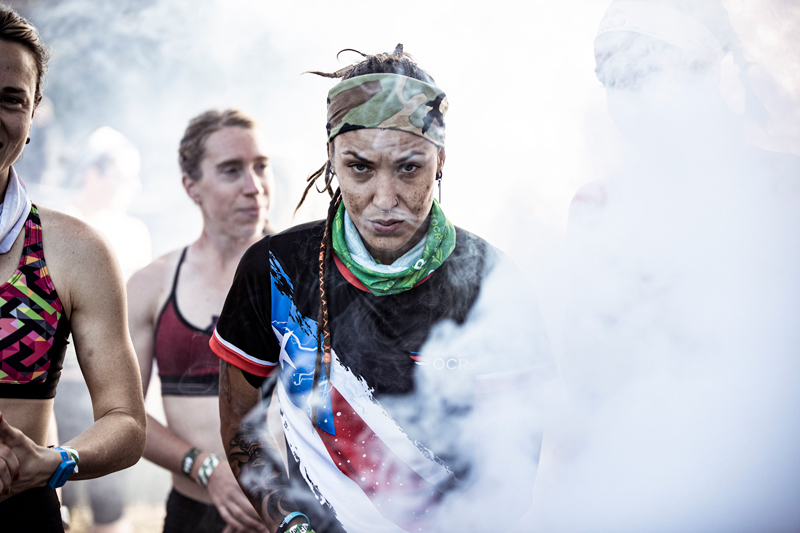
That’s precisely what 4,000 athletes will endeavor at this year’s OCR World Championships at Stratton Mountain, striving to etch their name in obstacle course racing history.
Obstacle course racing, also known as OCR, is one of the fastest-growing sports in the world. This year’s championships, the eighth of its kind, will call athletes from 60-70 different nations to its challenges. It’s the ultimate test of endurance, strength, and skill, and will be what professional and amateur athletes train for all year.
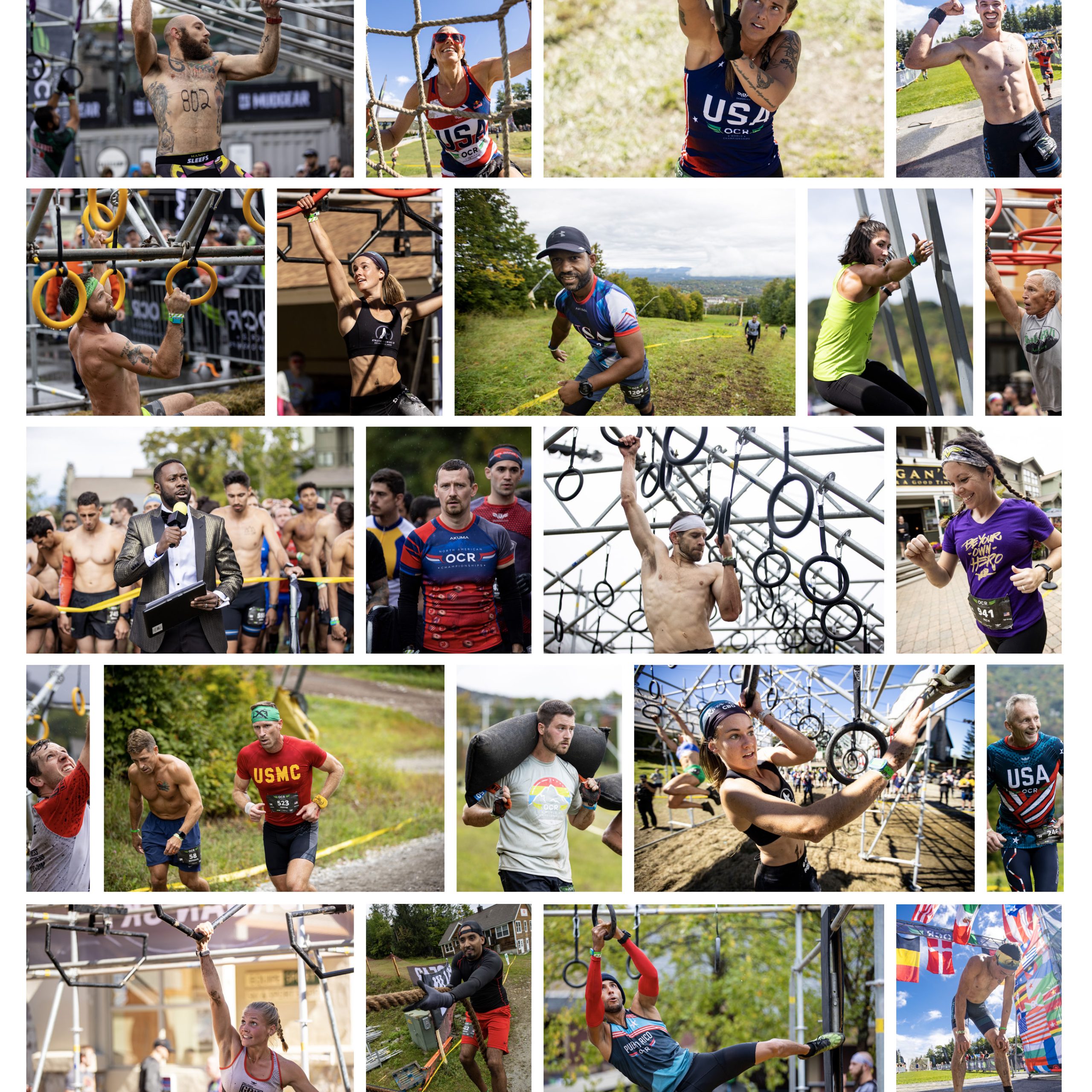
Obstacle course racing is essentially “a playground for adults,” says OCR President Adrian Bijanada. “The sport offers a way for athletes to challenge themselves while also enjoying activities they enjoyed as a child, such as monkey bars, climbing bars, and just getting dirty in nature.”
The 2022 World Championships will feature 5 different race configurations with over 50 different obstacles on the mountain and through Stratton Village. Race configurations include 15K (which weaves up and down the mountain with over 2,000 feet of elevation gain), 3K, 100M, Team Relay and the Charity Open, which benefits The Stratton Community Foundation.
Obstacles are designed to challenge athletes physically and mentally, with obstacles like the “Snake Pit”—a hanging rope traverse, and “Ricochet”—a rig style obstacle that requires changing direction and creative maneuvering. The kicker? Athletes must complete every obstacle in the course in which they’re competing. Skipping an obstacle is means for immediate disqualification.
The OCR World Championships ( OCRWC) are more than “just another mud run,” says Bijanada, and it differs from the popular obstacle course TV series, American Ninja Warrior, which catapulted obstacle course racing into fame with its inception in 2009.
OCRWC differs from a Ninja competition in that OCRWC uses the natural topography of the landscape, whereas American Ninja Warrior is constructed on a flat surface, such as a parking lot or a film studio.
“Natural features of the landscape make it more fun. Using the features of the mountain make it more challenging and unpredictable,” shares 2021 15K bronze medalist Logan Broadbent.
With OCR, the athletes get a sneak peek at the obstacles before the actual race. So if they know there’s going to be a challenging monkey bar-style obstacle, they can target that in their training. With Ninja Warrior, athletes essentially go in blind, not knowing what obstacle they’ll face until race day.
Obstacles at the World Championships are not one size fits all, adds Broadbent. Since he’s shorter than some of the taller athletes, his strength is flying through the air on ropes, swinging ropes, or bars. “These types of obstacles allow me to make up some time where I may be a bit slower on other obstacles like the heavy bag carry.”
That’s where strategy comes in for athletes when they train. Athletes may target their weaknesses during training, in order to achieve success in the actual competition. Since he might lose time carrying a heavy bag over his shoulder up the mountain, Broadbent will target heavy bag carry in his training.
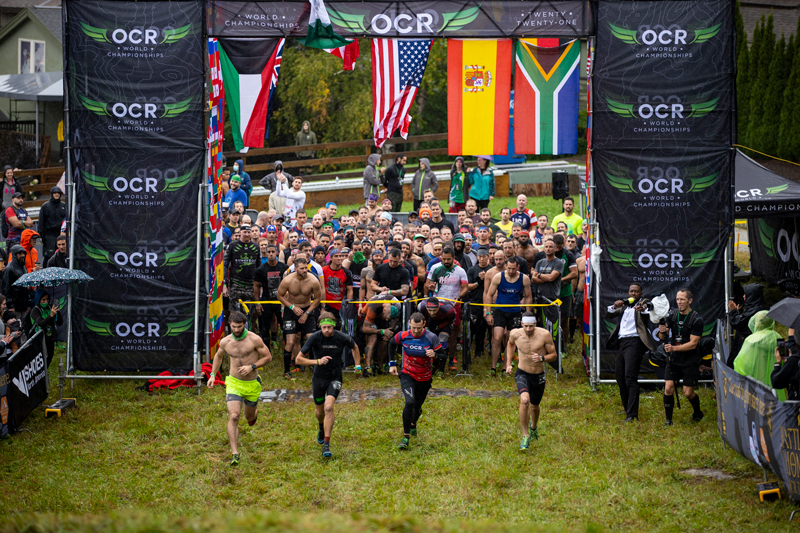
Preparing for the most challenging feat in obstacle course racing can’t be completed just inside the gym. Each obstacle requires athletes to use every muscle in their bodies—from their forearms to their cores and calves. Training their bodies for race day requires endurance running, biking, weightlifting, push/pull exercises, and grip strength training, like rock climbing. Getting out on the trails and preparing for the tumultuous Stratton terrain is also essential, says Broadbent.
The course is designed to test each contestant’s strength, speed, agility, and mental toughness. Some of the obstacles are designed for speed and efficiency; others require more endurance than power. The course also tests each athlete’s ability to adapt to the unexpected, with obstacles set up so that they can be completed in a variety of ways, depending on each contestant’s skill-set and preferences for strategy.
Adding a layer of difficulty to the obstacles is where they’re placed on the course, shared American Ninja Warrior and 2021 OCR 100M champion, Joe Moravsky. Obstacles placed at the top of the mountain will pose more of a challenge since athletes will need to complete them after sprinting up a steep hill, where obstacles at the start of the course may be a bit easier to conquer.
“Training in a variety of weather conditions and terrain variations can also be key to success on race day, adds OCR athlete and “Ultra OCR-Man” Evan Perperis. “Just because you train more doesn’t automatically mean you will win on race day. However, the more you race, the more unique situations, challenges, and problems you will encounter. By building on this experience, you’ll be able to troubleshoot on race day and likely perform better,” he writes on the OCR blog.
Moravsky believes that the key to winning the 100M race is training “Ninja.” That means practicing on actual obstacles and trying to complete the course as fast as possible.
Dubbed “The Weatherman” by the Ninja community from his former days as a weather forecaster, now a full-time professional Ninja, Moravsky spends almost every day in and out of the gym training. A manager at the Stamford Ninja Academy in Connecticut, Moravsky trains obstacles at least two days a week, with endurance and weight training filling in the other days of the week.
The 100M is a sprint course that features back-to-back-to-back obstacles with little to no time to think in between. Athletes get two chances at their fastest attempt on Saturday, with head-to-head finals on Sunday that will determine the 100M champion.
“Since athletes are sprinting through the course, they have no choice but to commit to the obstacle—jump, swing, propel themselves to the next obstacle without a second thought,” says Moravsky.
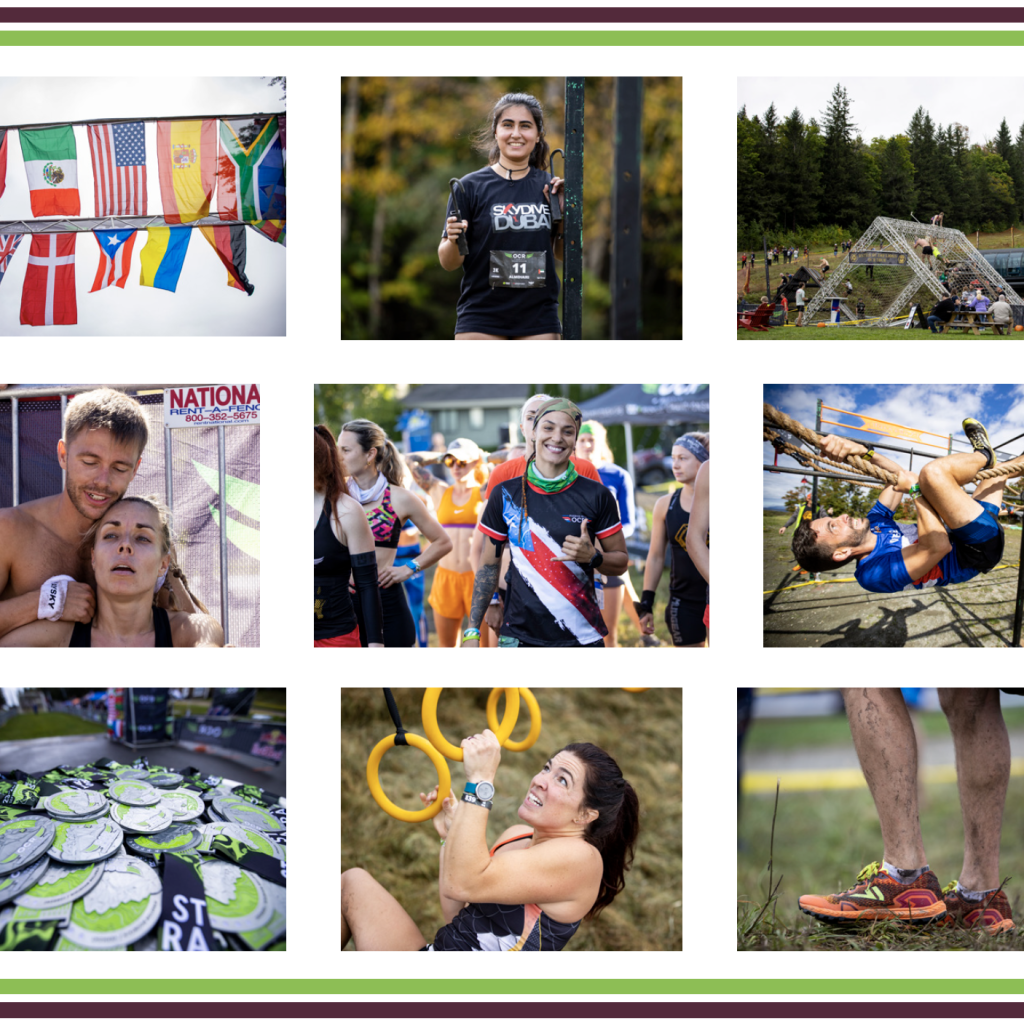
With four divisions—pro men, pro women, open men, and open women—athletes are offered two attempts at the course, with the top 8 times in each division advancing to a semi-final round, and two seeded heats in the semi-final to determine the champion of the 100M.
The longer—but just as quick—3K race is “engineered for speed” with 15+ obstacles and enough elevation gain to make your lungs beg for mercy. With the most obstacles per kilometer (around 8 obstacles per km), the 3K course doesn’t use the full height of the mountain and serves as a practice run for many 15K competitors.
Teams of three can take on the 25+ obstacles as a unit in the team relay event. This 6K Team Relay is a test of speed, strength, technique, and teamwork. The course is broken into three legs, each focused on a specific aspect of OCR: speed, strength, and technique. Then, all three athletes tackle the fourth leg together before crossing the finish line as a team.
Athletes of all ages will participate in the Stratton Mountain 5k Charity Race, where a portion of all registration proceeds benefit children and families in need through The Stratton Community Foundation. It offers athletes a fun, no-pressure environment with no time clock breathing down their necks. The goal: have fun and race through the course at your own pace.
The short and fast, but still challenging obstacle course race weaves through Stratton Village— making it a perfect spectator event.
The 15K is undoubtedly the most demanding feat in obstacle course racing. Dubbed the “Crown Jewel” of the World Championships, the race challenges athletes with nearly 10 miles of running and 40 obstacles of jumping, swinging, climbing, and crawling—and a daunting obstacle every 3 kilometers. The 2021 15K champion Ryan Kempson completed the entire course in just over an hour and a half, with Canadian Lindsay Webster coming out on top of the pro women’s group in under two hours.
Full-time Fitness
Training for a challenge such as a 15K mad dash up and down the mountain can be a full-time job. For many, it is.
Professional OCR athletes travel around the world to compete in competitions in order to qualify for the professional heat of the 15K and 3K OCR World Championships. Rankings are formulated monthly by the OCR International Voting Committee with male and female athletes duking it out for the top spot on the leaderboard. Each member in this committee ranks their top 15 female & male athletes, assigning a score of 15 points for their #1 ranked athlete down to a score of one point for their 15th place athlete. These scores are then averaged across all committee members to achieve a final ranking, according to the OCRWC website. The OCRWC will bring over 100 professional athletes from as many as 70 countries to Vermont.
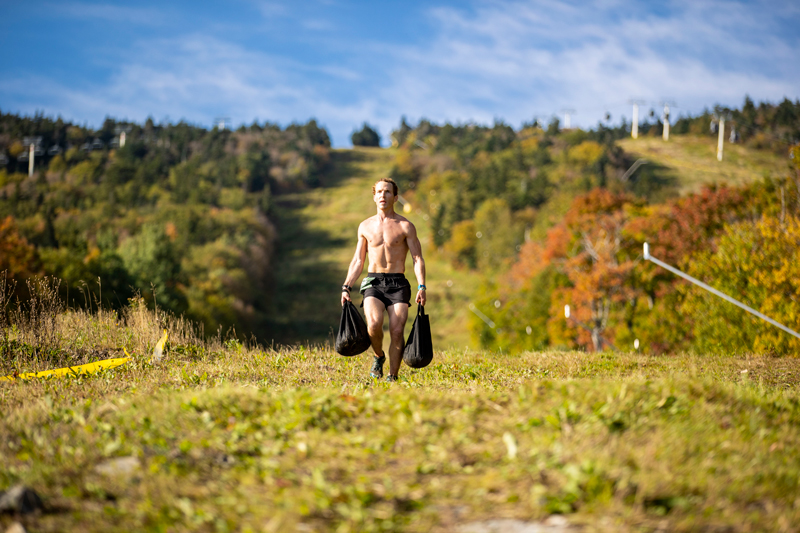
A highlight of the 2021 World Championships was the “King and Queen of the Mountain”—a challenge to see who could summit the 3,875 feet of Stratton Mountain the fastest.
Last year’s pro King was Ryan Kempson, summiting the tallest peak in Southern Vermont in a swift 31 minutes, with pro Queen and 15K World Champion Lindsay Webster conquering the peak in 39 minutes. Both athletes also came out on top for the event’s Peregrine challenge—a competition to see who could descend from the Stratton summit the fastest, with Kempson coming in under 13 minutes and Webster coming in under 17 minutes.
Not All Physical Strength
The OCRWC is held rain or shine. That means if it’s pouring down rain, or an early Fall has arrived with freezing temperatures (not unheard of in Southern Vermont), athletes need to be mentally prepared to face whatever the elements deliver to them.
“If the rain is causing you to doubt your skills, you may want to practice this way to build your mental confidence,” advises Perperis. “To build up confidence, consistency and practice are key.”
If the mountain and hills are daunting to an athlete, participating in a Spartan Mountain Series or training hills or inclines on the treadmill will help the athlete physically and mentally prepare for the rugged Stratton terrain.
If heavy carries are a concern, participating in a race that requires athletes to wear a heavy backpack the entire race will build confidence for carrying a heavy pack up the mountain.
Bijanada brings in multiple race companies to showcase their newest and best obstacles, so athletes need to be prepared for a surprise, said Webster. There are obstacles that athletes have never trained on before, and as an athlete going into the World Championships, “you never know what you’re going to get,” she said.
Why Stratton?
The diverse terrain of the mountain is what initially called the organizers to consider the mountain as the home of the World Championships, said OCRWC President Adrian Bijanada. Stratton gave the organizers a hallmark canvas to work with—from steep mountain running to flat spots that are ideal for obstacle installation, not to mention the breathtaking views that offer a fruitful reward when the athletes reach the peak.
When it comes to the World Champion- ships, the terrain is the hardest part, said Webster. “You can underestimate the mountains in the East because they’re not necessarily the biggest and the baddest mountains, but in the end, they just leave you destroyed mentally and physically,” she said.

OCR experts study the mountain to analyze the best and most challenging areas of the mountain to place the obstacles, using the natural landscape to their advantage.
With a vertical drop of 2,000 feet and nearly 100 trails to choose from, set-up is a feat in itself. The construction of the event begins 4 weeks in advance, where OCR employees haul supplies up and around the mountain to set up the obstacles where athletes will crawl, climb, conquer or be defeated.
With all this considered, the OCR World Championships is an event that exemplifies the growing popularity of obstacle course racing and the passion that competitors have for it. The athletes at this competition, as well as its viewers, are living examples of why so many view this sport as a one of the most challenging, yet thrilling competitions in the game of sport.
ALL THE DETAILS

